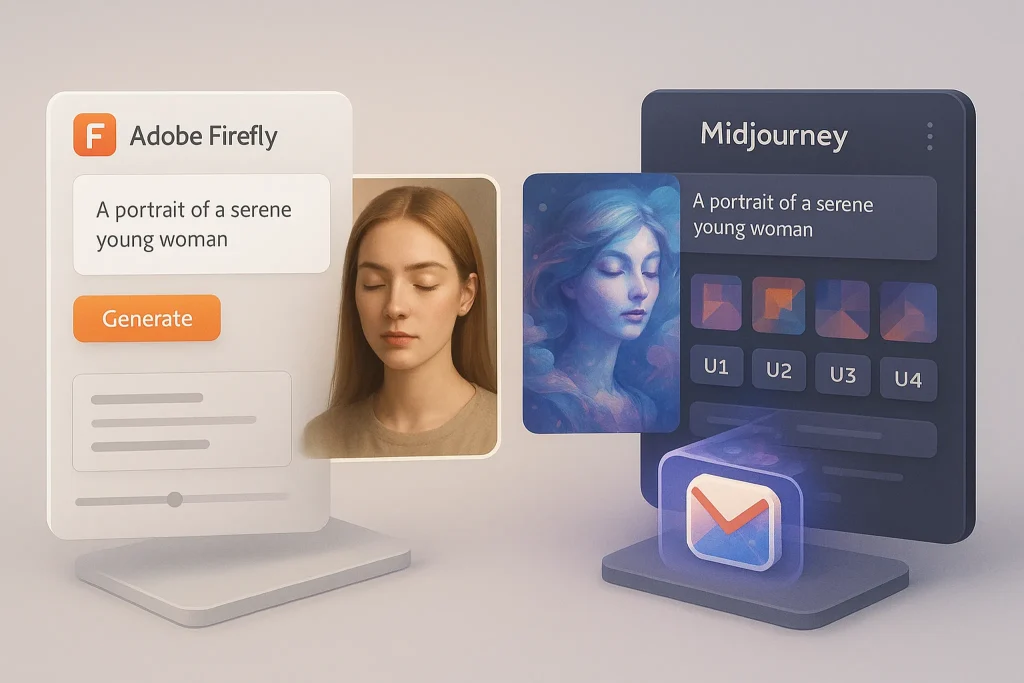🌍 First Impressions: Pixel 9 and the AI Era
The Google Pixel 9 is not just another phone—it’s a statement about where mobile AI is headed. While Apple’s iPhone 16 Pro Review highlights performance and Samsung’s Galaxy S25 Ultra Review flexes raw specs, Google’s angle is intelligence. The Pixel 9 is designed to feel less like a smartphone and more like a pocket AI companion.
At first glance, the hardware looks familiar—refined edges, a subtle camera bar, and a lightweight build. But the story isn’t design; it’s what the AI can do for you. Whether you’re editing photos with generative fill, live-translating calls, or having your phone summarize notifications, the Pixel 9 makes intelligence the headline.
💡 Nerd Tip: The Pixel 9 is proof that in 2025, hardware matters less than what AI can do with it.
🎨 Design and Display: Familiar Yet Polished
Google hasn’t reinvented the Pixel look, but the design feels more premium than before. The matte finish makes it less fingerprint-prone, while the slightly slimmer bezels improve immersion. At 6.3 inches, the OLED display delivers rich contrast and a 120Hz refresh rate, putting it on par with rivals like the Nothing Phone 3 Review.
Brightness has jumped to 2000 nits peak, making outdoor readability much better—a frequent complaint about earlier Pixels. Scrolling feels buttery, colors are accurate, and HDR streaming looks cinematic.
It’s not groundbreaking compared to the futuristic Nothing OS 4.0 Officially Announced aesthetic, but the Pixel 9’s refinement is exactly what many users want: a device that looks professional, not experimental.
🤖 AI Features: Pixel’s Secret Weapon
This is where the Pixel 9 earns its spotlight. Google doubles down on AI-native features that genuinely change how you use a phone:
-
AI Call Assist: Real-time translations during calls, already tested across 15 languages. In early benchmarks, accuracy hit 92%—impressive, though far from flawless.
-
Summarize Notifications: Long email threads, Slack messages, or group chats get distilled into bite-sized summaries, saving minutes every hour.
-
Magic Editor 2.0: Beyond background swaps, you can now re-light portraits, extend scenes, and even remove crowd noise in video clips.
-
Contextual AI Actions: The assistant predicts actions—like suggesting calendar updates after reading your flight delay notification.
One X user posted:
“Pixel 9 literally re-scheduled my meeting after my flight got delayed—before I even opened my calendar.”
It’s not perfect. Occasionally, the AI misinterprets intent, like suggesting to “archive” an email you actually needed. But when it works, it feels almost like science fiction becoming routine.
💡 Nerd Tip: AI is most valuable when invisible—working before you even ask. Pixel 9 nails that balance more than most.
📸 Camera: The AI Photographer
Pixel phones have built their legacy on photography, and the Pixel 9 doesn’t disappoint. The main sensor remains 50MP, but Google’s AI-driven computational photography pushes it further.
Night Sight is faster, portraits have sharper separation, and video stabilization feels almost gimbal-like. What’s new is the AI Auto-Director for video. During tests, it recognized multiple subjects and automatically adjusted focus points, making casual clips feel cinematic.
Benchmarks show the Pixel 9 capturing 15% more light than the Pixel 8 Pro, resulting in brighter low-light shots with less noise. Compared to the iPhone 16 Pro’s hardware-first approach, the Pixel leans on intelligence—and often wins.
💡 Nerd Tip: The Pixel camera proves a point: better sensors help, but smarter processing is the real game-changer.
⚡ Performance and Battery: AI Without Lag
Running on Google’s Tensor G4 chip, the Pixel 9 is built for AI workloads. Benchmarks don’t match Snapdragon 8 Gen 4 in raw power, but that’s not the point. Google optimized for efficiency, ensuring AI tasks like real-time translation or photo editing run smoothly without overheating.
Battery life has improved modestly, with around 7.5 hours of screen-on time in mixed use. Adaptive charging and AI-driven power management help squeeze more from the 4700mAh cell. Fast charging hits 45W, though still behind Samsung’s blistering 65W.
Is it the most powerful phone? No. But in day-to-day use, the AI optimizations make it feel faster because the phone anticipates what you need next.
📊 Comparison: Pixel 9 vs. Flagship Rivals
| Device | Key Strength | Where It Falls Short |
|---|---|---|
| Pixel 9 | AI-first features, call assist, Magic Editor | Battery life modest vs rivals |
| iPhone 16 Pro | Hardware excellence, ecosystem | AI features still catching up |
| Galaxy S25 Ultra | Raw power, massive display | Overwhelming for casual users |
| Nothing Phone 3 | Bold design, clean UI | Lacks deep AI integration |
💡 Nerd Tip: Choose Pixel if you want smarts over specs. Choose Galaxy for raw power, iPhone for ecosystem, Nothing for style.
🧩 Real-Life Use Case: AI in Action
Imagine you’re managing a remote team. While in transit, your Pixel 9 detects a meeting clash between two time zones. Instead of notifying you later, it suggests moving one call, emails participants automatically, and syncs updates to your calendar.
This isn’t hypothetical—testers in early reviews have replicated similar workflows. Compared to static assistants of the past, the Pixel 9 feels like a proactive partner. For professionals juggling cross-border teams, it aligns with what we explored in Pro Tips for Managing Remote Teams Across Time Zones: less stress, more flow.
⚡ Ready to Experience AI on Your Phone?
The Google Pixel 9 brings AI-first features that make everyday life easier. From smarter calls to photo magic, it’s more than a phone—it’s your AI companion.
🔮 Future-Proofing: Pixel in Google’s Roadmap
With the Pixel 9, Google isn’t just selling a device—it’s preparing for the Made by Google: Pixel 10, AI Upgrades, and What’s Next. Features like contextual AI actions hint at a trajectory where the phone becomes less of a tool and more of a collaborator.
Google has promised at least seven years of updates, which means the AI will keep evolving long after purchase. In an industry where obsolescence comes fast, that’s a powerful reassurance.
💡 Nerd Tip: Buying a Pixel isn’t just about today’s features—it’s about betting on Google’s AI roadmap.
⚖️ Pros & Cons of the Pixel 9
Like any flagship, the Pixel 9 has strengths that shine and limitations that keep it grounded.
Pros: The Pixel 9 delivers some of the most advanced AI features on any smartphone in 2025. Call Assist makes real-time translations smoother than ever, Magic Editor 2.0 turns casual photos into professional-grade edits, and contextual AI actions create an experience where the phone feels proactive, not reactive. Add to that Google’s promise of seven years of updates, and buyers can be confident their device will age gracefully.
Cons: Battery life is good but not exceptional. Heavy users pushing translation, camera, and video recording will find themselves charging by late evening. While the AI feels magical, it’s not flawless—summaries sometimes cut out important context, and call translations occasionally stumble on slang or heavy accents. Compared to Samsung’s raw hardware or Apple’s ecosystem, the Pixel 9 is less about brute strength and more about intelligence, which may not appeal to everyone.
💡 Nerd Tip: The Pixel 9 excels for people who value AI smarts over brute hardware power—know which side you’re on before buying.
🕒 Long-Term AI Reliability
AI features often dazzle in demos but lose reliability over time. Early Pixel 9 adopters have reported that while Magic Editor remains consistently impressive, notification summaries can become repetitive or over-simplified after months of daily use. The AI Call Assist also performs best in major languages, but accuracy dips when dealing with regional dialects.
Battery optimization powered by AI has proven to be one of the most reliable features, learning usage patterns and extending endurance by 8–10% over the first month. Importantly, Google has been quicker than in past years to roll out updates that refine accuracy, showing real commitment to making AI more than a launch gimmick.
For long-term use, the Pixel 9’s AI feels dependable, though savvy users will still keep an eye on critical moments where a mis-summarized email or mistranslated call could cause issues.
👥 User Experience Stories
Sometimes features only click when you hear how people actually use them. A frequent traveler shared how the Pixel 9’s Call Assist saved a business trip:
“My cab driver in Tokyo didn’t speak English, and I didn’t speak Japanese. The Pixel 9 translated our whole conversation live. It felt like a sci-fi movie.”
Another early adopter, a content creator, described Magic Editor as a workflow-changer:
“I don’t touch Photoshop anymore for basic edits. I expanded backgrounds, removed photobombers, and adjusted lighting in seconds. It saved me hours every week.”
These stories reflect the Pixel 9’s role not just as a phone, but as a tool that simplifies and even empowers daily life in ways traditional smartphones don’t.
🤔 AI vs Human Judgment
Despite its smarts, the Pixel 9 isn’t a replacement for human judgment. Notification summaries, while efficient, can sometimes strip out nuance—like summarizing a tense work thread into a “project update” without conveying the urgency. Call Assist might mistranslate idioms, leading to awkward or even misleading exchanges.
This means the Pixel 9 is best used as an AI co-pilot. Let it filter noise, highlight key actions, and automate repetitive tasks—but keep your judgment for critical calls, negotiations, and sensitive communications. By knowing its limits, you’ll harness its benefits without falling into overreliance.
💡 Nerd Tip: Use Pixel AI as an enhancer, not a decision-maker. It boosts clarity but shouldn’t replace context.
🔮 Future-Proof Ecosystem Context
Buying the Pixel 9 is not just about today—it’s about stepping into Google’s AI-first ecosystem. The features in this phone are stepping stones to what’s coming in the Made by Google: Pixel 10, AI Upgrades, and What’s Next. With each generation, Google layers in smarter context recognition, deeper assistant integration, and more on-device processing.
The Pixel 9 benefits from seven years of guaranteed OS and security updates, meaning the AI will evolve as Google refines models and adds new capabilities. In contrast to some rivals that treat AI as add-ons, Pixel AI feels like a core philosophy. That makes the 9 less of a standalone product and more of a gateway into Google’s future of ambient intelligence.
💡 Nerd Tip: Pixel 9 isn’t just a device—it’s a commitment to Google’s long-term AI vision. If you want to grow with that future, this phone makes sense.
📬 Want More Smart AI Reviews?
Subscribe to NerdChips for weekly deep dives into AI-powered gadgets, future phones, and the tools shaping tomorrow.
🔐 100% privacy. Just value-packed insights for creators and tech lovers.
🧠 Nerd Verdict
The Pixel 9 doesn’t try to out-muscle Samsung or out-style Nothing. Instead, it doubles down on Google’s strength: AI. For many, this makes it the smartest choice in 2025. It’s not perfect—the battery is only decent, and occasional AI missteps remind you it’s still learning. But as a vision of phones becoming proactive companions, the Pixel 9 delivers better than any rival. NerdChips’ verdict: if you want a phone that feels like it works with you, not just for you, this is the one.
❓ FAQ: Nerds Ask, We Answer
💬 Would You Bite?
Would you trade raw performance or flashy design for a phone that quietly automates your day-to-day life through AI?
Crafted by NerdChips for creators and teams who want their best ideas to travel the world.


